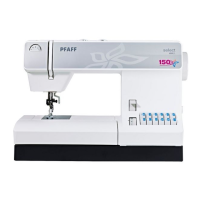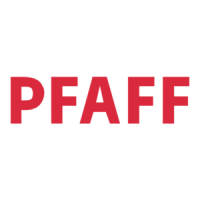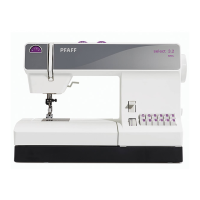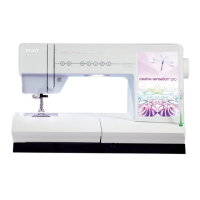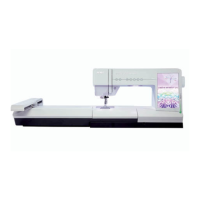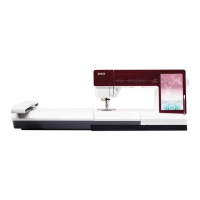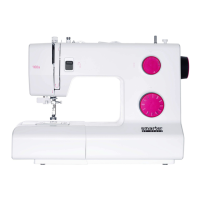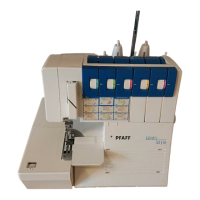51
Decorative sewing and embroidery techniques
Decorative buttonhole
This buttonhole is a beautiful alternative to the
traditional buttonhole (see page 32-33). Since
you determine the width of the buttonhole
seam, the buttonhole can have a width of up
to 10 mm.
• Sew two buttonhole seams about 1 mm
apart using a dense zigzag stitch (stitch G
(1540), E (1530/1520), stitch width 3-5
mm). The needle thread tension is set to
“buttonhole”.
• Select the right needle position and sew
over both ends of the buttonhole seam with
a triangle. To do this, turn the stitch width
dial (27) during sewing constantly from 0 to
5
and back to 0. The top of the triangle
should meet the middle of both buttonhole
seams.
Appliqué
Appliqués are quickly made and always produce
a beautiful fancy effect. By using different
materials and patterns you can
sew many different variations. You can make a
perfect, densely stitched seam with the appliqué
foot (special accessories), because it has a
special cutout on the
underside for the buttonhole seam. Use a fusible
backing fabric to iron the appliqué onto the
material, making it easier for you to appliqué.
• Insert the appliqué foot in the sewing
machine.
• Transfer your drafted pattern to the face side,
smooth side, of the fusible backing fabric.
Remember that e.g. letters have to be drawn
as a mirror image.
• Now iron the backing fabric onto the
appplqué material. Cut the motif out and pull
the paper off.
• Place and iron on the appliqué parts on the
base material.
• Sew over a appliqué material edges with
the dense zigzag, stitch G (1540), E (1530/
1520), stitch width 2-4 mm, stitch length
“buttonhole”. The needle thread tension is in
the “buttonhole” area. Make sure the needle
stitches over the outer edge so that no
fraying occurs later.
Tip: For appliqué pieces which are pointed
at the ends, you can make the zigzag stitch
narrower using the width dial (27) so that the
ends are pointed.
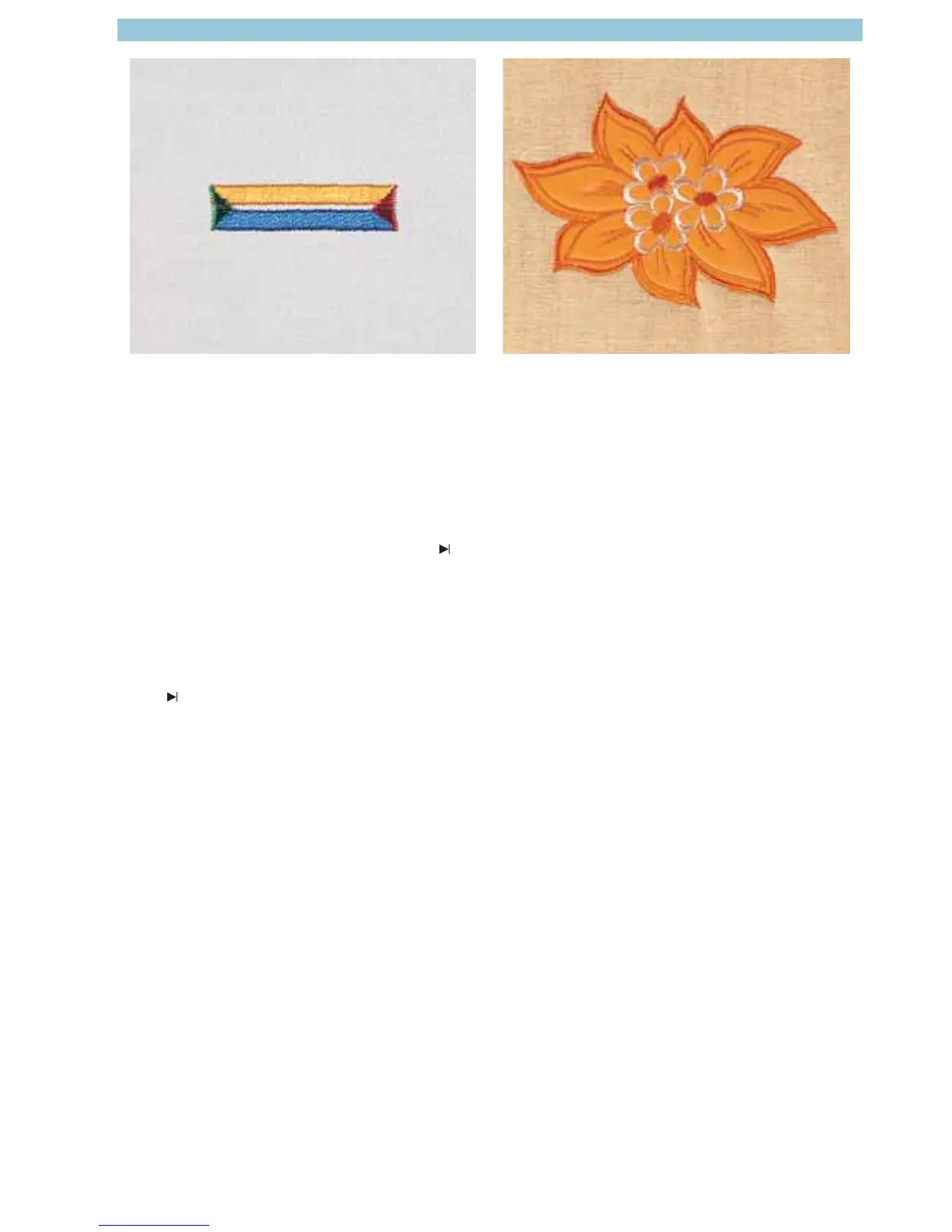